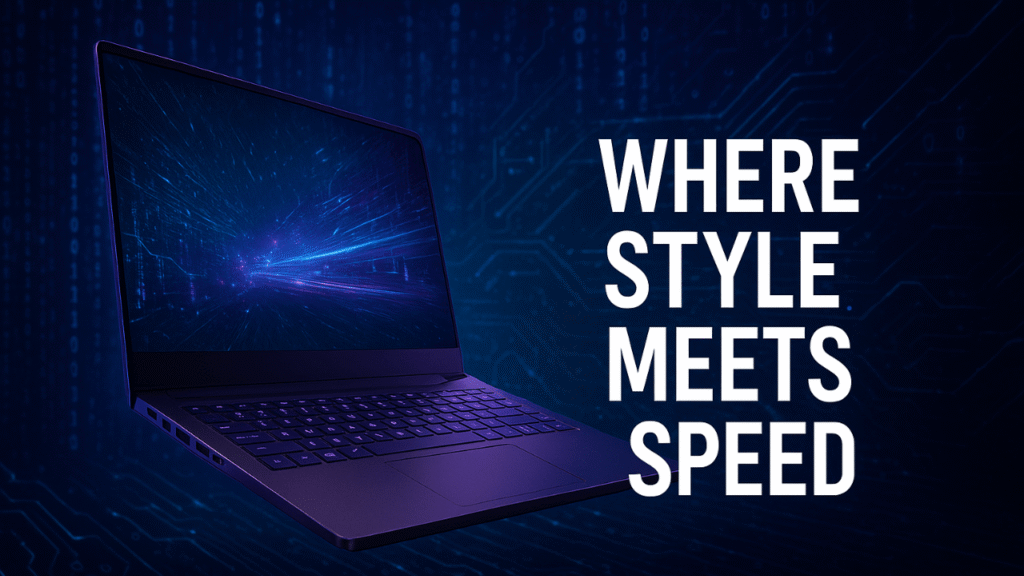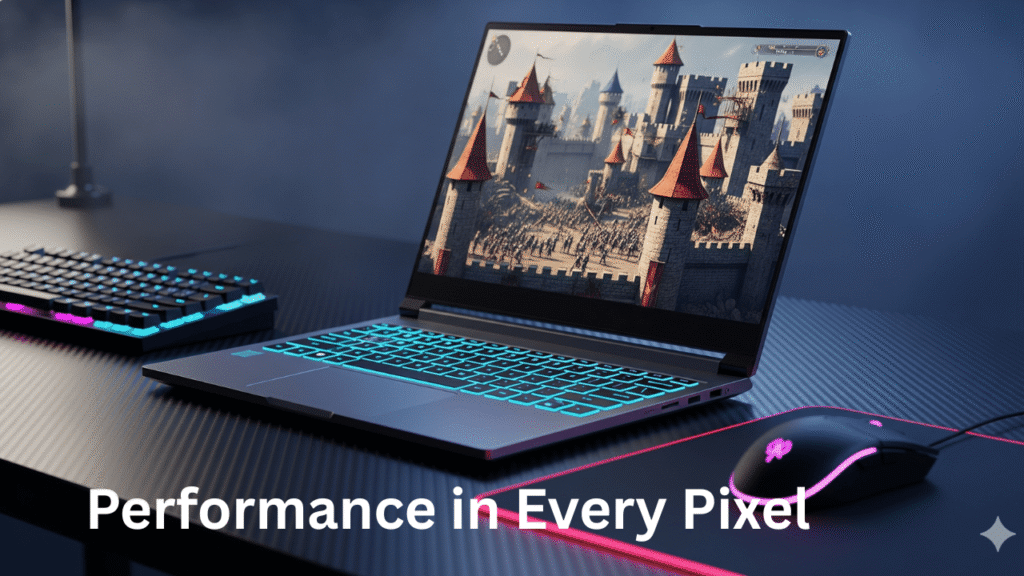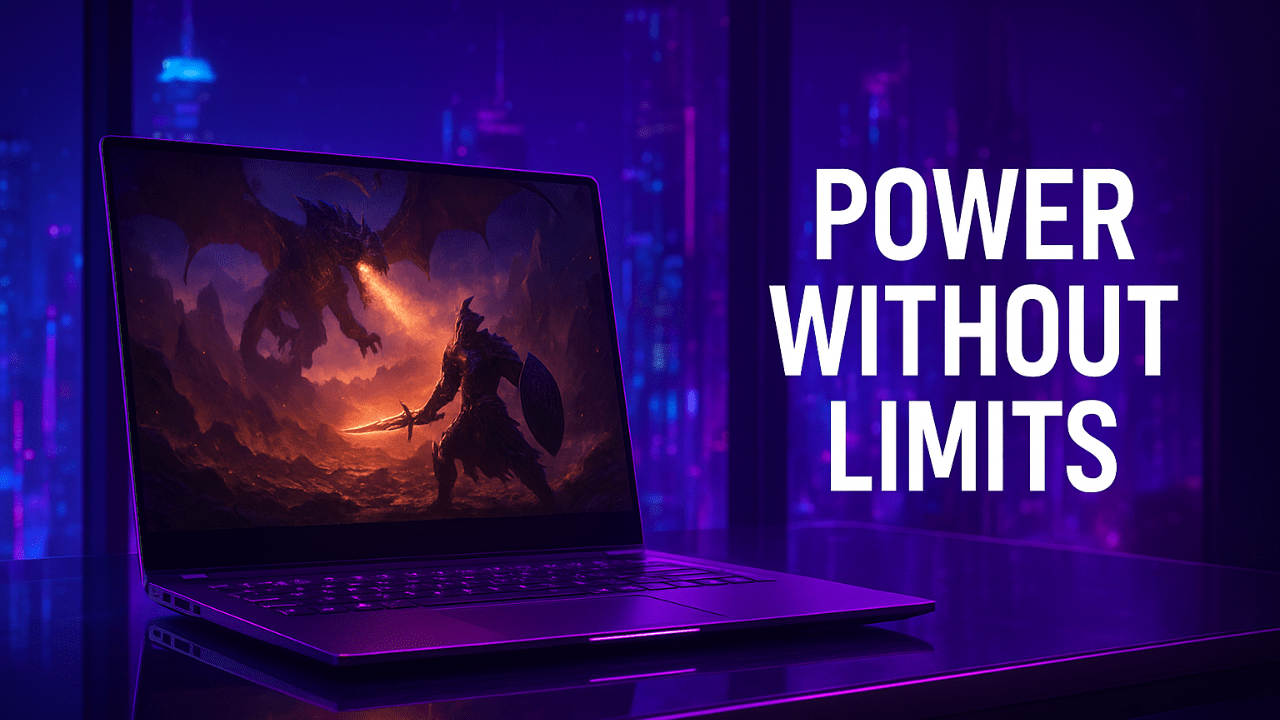Introduction
The gaming world has never stood still, but the last decade has brought a quiet revolution. Gone are the days when playing demanding titles meant being tethered to a bulky desktop or carrying a laptop that felt like a concrete block. Today, gamers want the same freedom that music lovers found when headphones went wireless—performance without restriction. This is exactly what the new wave of thin laptop gaming models delivers: machines that slip easily into backpacks but carry the muscle to run AAA titles.
The demand isn’t just about portability. It’s about mobility without compromise. Gamers now stream on the go, compete from hotel rooms, and edit highlight reels on airplanes. Portability and performance matter more than ever because lifestyles demand flexibility. A thin laptop gaming device isn’t only about gaming—it’s about living without boundaries. It’s a cultural shift where sleekness equals strength, and every millimeter saved feels like reclaiming freedom.
The Evolution of Thin Laptop Gaming Devices
Think back to the early gaming laptops: clunky bodies, screaming fans, and battery lives that barely lasted a movie. They were more like portable desktops than actual laptops. But as chipmakers and designers pushed forward, they unlocked a new philosophy—smaller doesn’t have to mean weaker. Over time, cooling systems improved, GPUs shrank without losing power, and displays became thinner yet sharper. This transformation redefined what a gaming machine could be.
By 2025, thin laptop gaming machines are no longer experimental novelties. They’re the industry standard, representing how far efficiency and design have come. Engineers now focus on vapor chambers, liquid metal cooling, and battery optimization—all inside a razor-thin body. What once seemed like science fiction—ultra-slim laptops running high-end games flawlessly—has become everyday reality. The thin laptop gaming category reflects this evolution perfectly: proof that raw performance and portability can finally coexist without compromise.

Key Benefits of Thin Laptop Gaming Models
There’s a kind of liberation in carrying a laptop that doesn’t weigh you down but still dominates performance charts. The most obvious advantage of thin laptop gaming designs is portability, letting players enjoy games anywhere—whether in a café, a dorm, or a plane. These laptops remove the constant choice between travel convenience and gaming readiness. For the modern gamer, that balance is priceless.
But the benefits go deeper. Minimalist designs make them suitable for both work and play, blending into a business meeting as smoothly as a LAN party. Efficiency is another win: optimized processors and smarter cooling extend battery life and reduce overheating. Modern thin laptop gaming devices even deliver near-silent operation, a far cry from the jet-engine fans of the past. Together, these benefits make thin gaming laptops more than machines—they’re lifestyle upgrades.
Performance That Defies Size
It’s easy to underestimate what a slim frame can hide. Today’s thin laptop gaming models contain GPUs and processors that rival desktops, proving size is no longer destiny. They run demanding AAA titles at high frame rates, handle 4K video editing, and manage streaming software all at once—tasks that once required a tower and dedicated setup.
Benchmarks consistently show how far these machines have come. Many thin laptops now outperform older, bulkier models, turning heads in both gaming and productivity tests. Beyond numbers, it’s the consistency that impresses: smooth frame delivery, minimal stutter, and stable thermal management. The magic lies in engineering that squeezes power into compact designs without cutting corners. The latest thin laptop gaming devices demonstrate that small can be mighty, and in 2025, “thin” has become synonymous with “capable.”

Style Meets Substance: The Aesthetic Advantage
Hardware is no longer judged on power alone—it’s judged on presence. Sleek finishes, razor-thin displays, and precise lines make modern laptops look as sharp as they perform. For professionals, that means carrying a machine that won’t look out of place in a boardroom. For gamers, it’s about showing off gear that feels as premium as the experience it delivers.
The thin laptop gaming category excels in this balance of beauty and power. Slim bezels frame high-refresh displays, RGB lighting is customizable without being overwhelming, and aluminum bodies elevate design to premium territory. These laptops aren’t just functional—they’re aspirational. Owning one feels less like having a tool and more like carrying a statement piece. By 2025, thin laptop gaming models will prove that elegance doesn’t need to sacrifice muscle.
Challenges Behind Thin Laptop Gaming: Machines
Every innovation carries its own challenges, and slim gaming laptops are no exception. Cooling remains the greatest hurdle, as smaller frames struggle to dissipate the intense heat of high-performance components. While manufacturers use vapor chambers, advanced fans, and liquid metals, long sessions can still expose thermal limits. The trade-off is inevitable: slimmer machines simply have less space for airflow.
Upgradeability is another sacrifice. Unlike desktops, most thin laptops only allow minor changes—like adding storage or upgrading RAM—leaving little room for personalization. Battery life is also tricky: while processors are more efficient, pushing GPUs at full throttle still drains power quickly. These issues are the growing pains of a young but maturing category. Yet every challenge forces smarter engineering. With each generation, thin laptop gaming models are closing the gap, making compromises feel less like weaknesses and more like steps toward refinement.

Best Thin Laptop Gaming Options in 2025
The year 2025 brings no shortage of standout thin laptops. ASUS ROG Zephyrus leads with cutting-edge GPUs inside unbelievably slim shells. Razer Blade remains a top choice for those who value premium design with no trade-offs in speed. MSI Stealth targets professionals who want understated exteriors but fierce gaming performance under the hood. Even Acer and Lenovo now offer impressive entries that balance affordability and portability.
Choosing the right model depends on lifestyle. Streamers might favor the Zephyrus for its cooling power, while digital nomads gravitate toward the Razer Blade for its versatility. The common thread? Each is proof that thin laptop gaming is not a trend—it’s the new standard. With price ranges widening, there’s now a thin laptop gaming option for nearly every type of gamer, from budget-conscious students to competitive professionals.
The Future of Thin Laptop Gaming: Technology
The next frontier is already taking shape. Future thin laptop gaming models will feature smarter AI-driven performance tuning, adjusting CPU and GPU usage dynamically for maximum efficiency. Cooling breakthroughs—such as advanced vapor chambers and even liquid cooling—promise to stretch performance further without adding bulk. Battery innovations aim to extend life beyond the current few hours of heavy gaming.
Chip design is another area to watch. Manufacturers are focusing on smaller, more efficient processors that reduce heat while delivering higher output. Displays, too, are evolving, with paper-thin OLED panels offering breathtaking visuals without straining frames. With every advancement, the line between desktop power and laptop portability blurs further. In the near future, thin laptop gaming on devices could fully eclipse traditional rigs, not by replacing them outright, but by redefining how and where high-performance gaming can happen.

❓ Frequently Asked Questions (FAQ)
Q1: What makes thin laptop gaming devices different from regular gaming laptops?
Thin Laptop gaming models focus on combining slim design with high performance. Unlike bulky machines, they are engineered for portability without losing GPU and CPU power, making them ideal for gamers who travel or prefer sleek setups.
Q2: Can thin laptop gaming machines handle modern AAA games smoothly?
Yes. Many 2025 thin gaming laptops feature advanced GPUs, efficient cooling systems, and high-refresh-rate displays. This allows them to run demanding AAA titles smoothly while still keeping a slim profile.
Q3: Do thin laptop gaming devices overheat easily?
Heat is a common challenge, but new innovations in thermal design—like vapor chambers and AI-powered cooling—help thin gaming laptops maintain performance without extreme overheating.
Q4: Are thin laptop gaming models good for both work and play?
Absolutely. Their minimalist design and powerful hardware make them versatile. You can use them for creative work, video editing, or streaming, while still enjoying immersive gaming sessions.
Q5: Is a thin laptop gaming option worth the investment in 2025?
If you value portability, style, and high performance in a single device, then yes. Thin gaming laptops offer the freedom to game anywhere while looking professional enough for everyday tasks.
Conclusion
The rise of thin laptop gaming machines is more than a shift in form—it’s a reimagining of what freedom in gaming looks like. These laptops embody a balance once thought impossible: uncompromised power in designs that slip into daily life with ease. They’ve moved from niche experiments to mainstream essentials, shaping the way gamers live, travel, and compete.
In 2025, choosing one is not just about specs—it’s about embracing a new standard of mobility. The message is clear: the future of gaming is not anchored to desks or defined by bulk. With thin laptop gaming innovations, freedom and power finally sit in the same frame.


3 thoughts on “Thin Laptop Gaming: Where Power Meets Elegance in 2025”